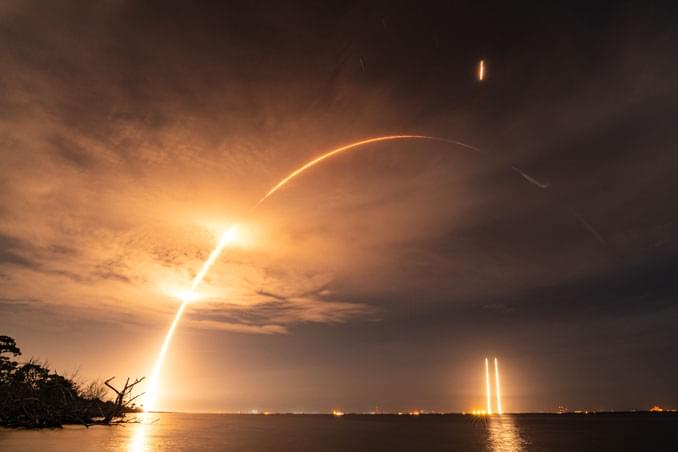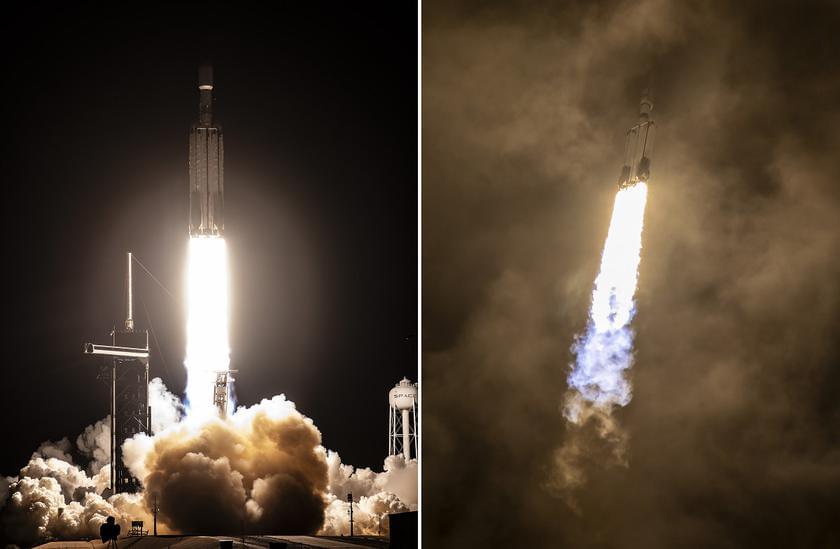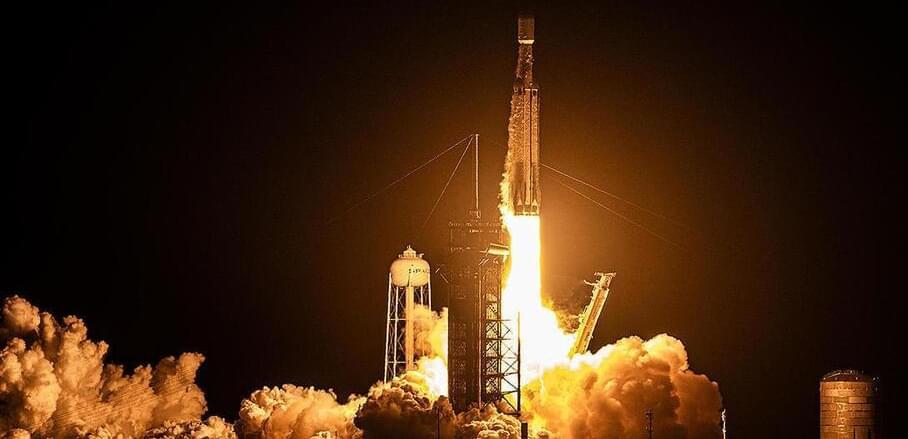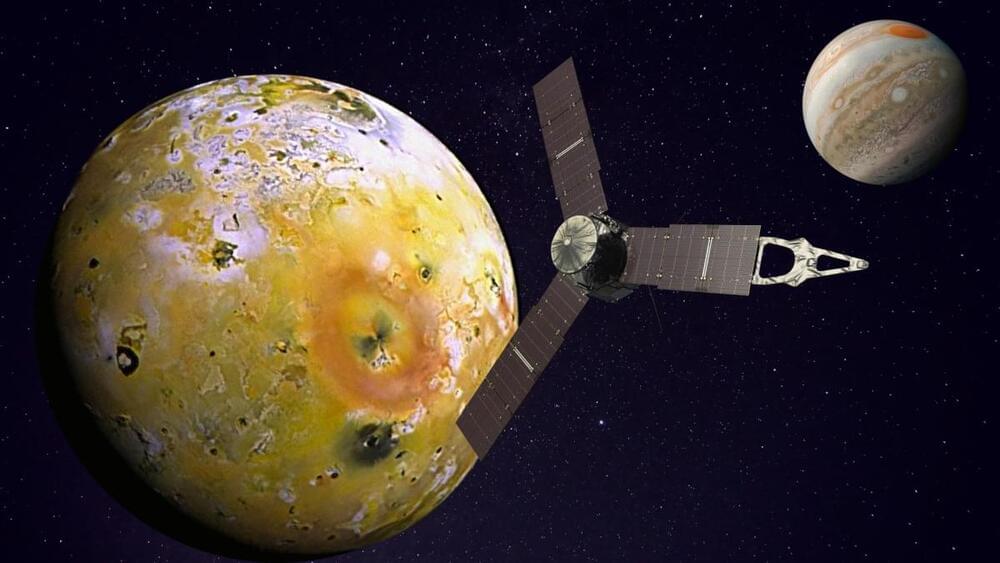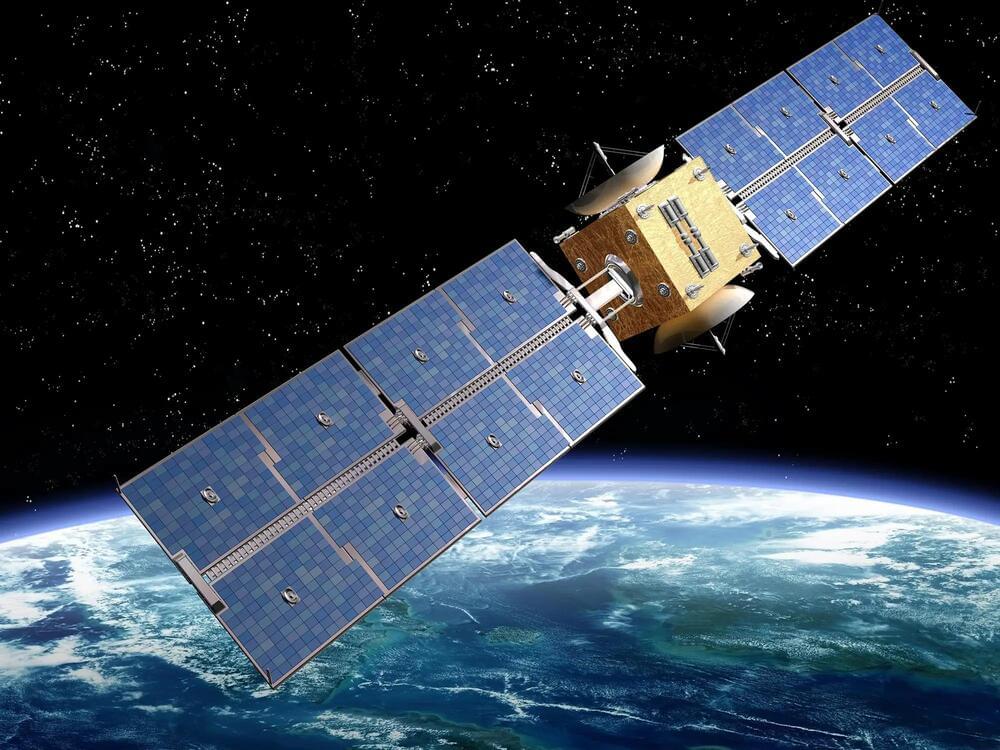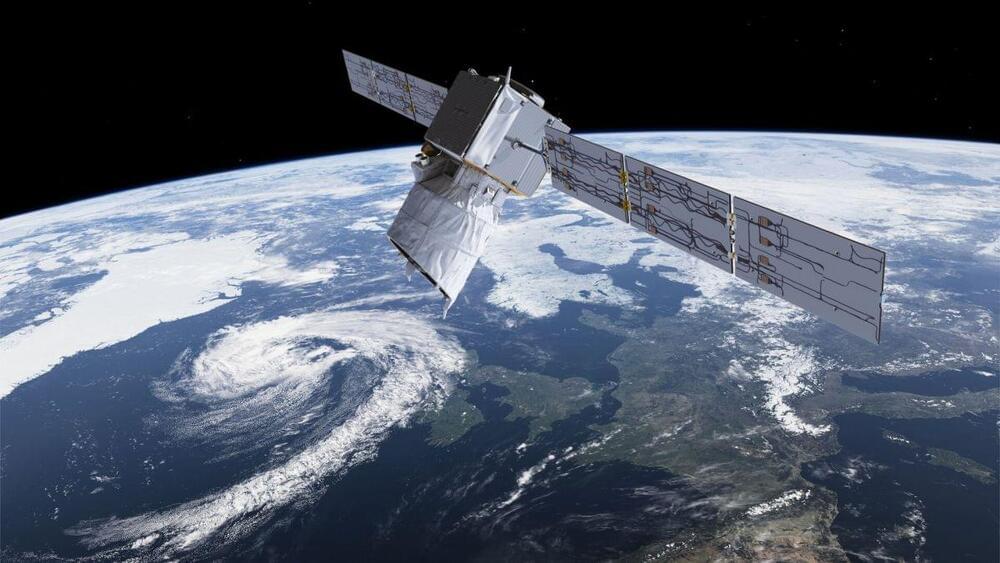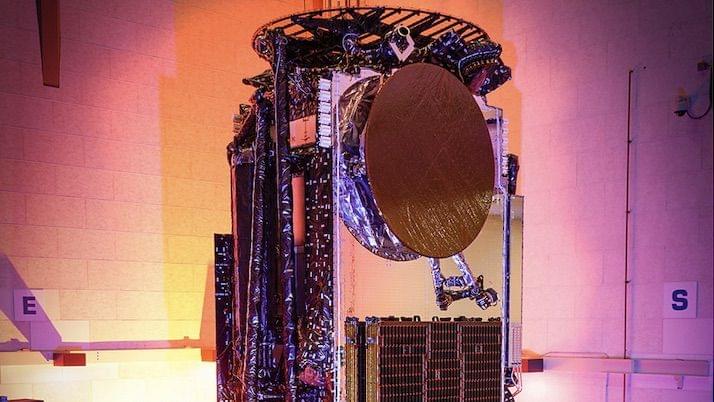SpaceX launched the world’s heaviest commercial communications satellite atop a Falcon Heavy rocket on Friday. The triple-core rocket lifted off from Kennedy Space Center’s pad 39A with the Jupiter 3/EchoStar 24 satellite at 11:04 p.m. EDT (0304 UTC Saturday).
The successful launch came after a scrub on Wednesday and a 48-hour delay to replace a stuck liquid oxygen valve on the rocket’s port-side booster. After a week of stormy conditions on the Florida Space Coast the weather improved and the rocket lifted off in calm conditions, with just a thin layer of cloud in the sky.
It was the seventh mission for the Falcon Heavy and the third flight of the rocket this year. The Falcon Heavy’s twin side boosters, which have made two previous flights, returned to SpaceX’s Landing Zones 1 & 2 punching through a thin layer of cloud and announcing their arrival with sonic booms. The rocket’s core stage required all its capacity to loft the giant satellite into a geostationary transfer orbit and was not recovered.
